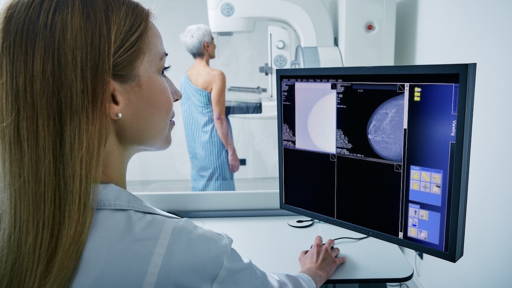Researchers at the Translational Genomics Research Institute (TGen), part of City of Hope, and the Lundquist Institute (Harbour-UCLA Medical Centre) have discovered a promising biomarker for Long COVID. This could represent a breakthrough for this condition, for which no specific and objective diagnostic test is currently available.
Currently, Long COVID is diagnosed in hospitals based on a broad spectrum of symptoms that persist for 12 weeks or longer after SARS-CoV-2 infection, such as fatigue, shortness of breath and post-exertional malaise. There are no standard diagnostic tests or blood markers to confirm this condition. ‘I don't have any blood tests or biomarkers to confirm this diagnosis,’ notes Dr William Stringer (Lundquist Institute).
EVs as a new diagnostic tool
A recent study published in Springer Nature has now shown that fragments of the SARS-CoV-2 protein are present in so-called extracellular vesicles (EVs). These are microscopic packages that cells use for intercellular exchange of proteins and other molecules. They are excellent candidates for a reliable, virus-specific biomarker: EVs with viral content suggest the persistent presence of virus components in patients with persistent symptoms.
The analysis involved 56 blood samples from 14 adult patients with Long COVID, collected before and after exercise tests and during a 12-week exercise programme. EVs were analysed using advanced mass spectrometry. No fewer than 65 unique peptides from the viral polyprotein Pp1ab, essential for virus replication, were detected in 22 of these samples. Each participant showed at least one viral fragment in their EV cargo. One specific peptide, ‘GSLPINVIVFDGK,’ derived from nsp3, was found repeatedly in 12 of the 14 patients and was absent in EV samples from the pre-pandemic control group.
Implications and next steps
This finding represents a first step towards an objective and specific biomarker for Long COVID, which is currently lacking in international clinical practice. The persistence of viral fragments supports hypotheses about viral reservoirs that may drive the pathophysiology of Long COVID.
However, important questions remain: do these fragments play a role as “molecular waste” or do they indicate active virus remnants? And is their presence consistent enough for routine diagnostics? These issues need to be further investigated in follow-up studies with larger and more diverse patient groups.
Strategic relevance
With this technological and methodological innovation, the study offers an opportunity to professionalise the diagnosis and understanding of Long COVID. The use of EVs as carriers of viral material opens new avenues for the development of targeted tests and potential therapeutic interventions. Moreover, this approach is in line with the trend towards strengthening clinical decision-making with molecular biomarkers in digital healthcare.
Last year, Australian researchers conducted a study to gain insight into risk groups for Long COVID. To this end, seven million GP records from Sydney and Melbourne were analysed. The study showed that Long COVID is more common in women, middle-aged people (40–59 years), individuals with a higher socioeconomic status, and patients with existing health problems such as mental disorders, respiratory problems (e.g. asthma or emphysema), cancer, or musculoskeletal disorders. It also found that healthcare systems often lack the correct definition and underlying knowledge to effectively support patients.









